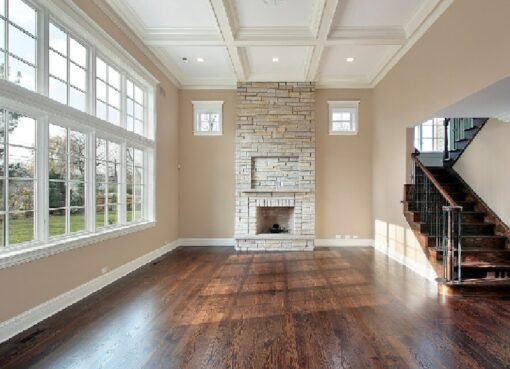Creating Connections Social Spaces for Players and Clubs

Sports are more than just games; they are a means to connect, engage, and build community. For sports organizers and clubs, it’s essential to create environments that facilitate these connections. In this blog post, we’ll explore the opportunities presented by social spaces designed for players and clubs.
From enhancing player engagement to fostering community ties, we’ll uncover how to make these spaces truly impactful. Whether you’re considering a new project or looking to improve your existing facilities, our insights will guide you in creating spaces that encourage interaction and build lasting relationships.
Understanding the Importance of Social Spaces
Fostering Community Connections
The role of social spaces in sports cannot be underestimated. They serve as the backdrop for celebrations, teamwork, and community gatherings, transforming mere players into a tight-knit community. For many, the shared experience of enjoying a game or a post-match barbecue becomes an integral part of their social life, creating memories that extend far beyond the playing field.
Enhancing Player Engagement
Well-designed social spaces not only encourage players to bond off the field but also significantly enhance their on-field performance. By providing a comfortable environment for relaxation and social interaction, clubs can boost player morale, reduce stress, and foster a sense of belonging. This, in turn, translates into better teamwork and improved overall performance.
Building Lasting Relationships
Social spaces have the power to strengthen the bonds between clubs and their communities. By hosting events in these spaces, clubs can showcase their commitment to promoting social interaction and healthy living, thereby becoming a beloved fixture in the local landscape. This relationship, built on mutual respect and shared experiences, can lead to increased support and involvement from the community.
Ideal Features of Social Spaces
Flexible Layouts for Various Activities
A well-designed social space should have a flexible layout, accommodating different activities and group sizes. Whether it’s a casual gathering after a game or a larger event for the entire club, the space should adapt seamlessly to the needs of its users.
Comfortable and Inviting Furnishings
Comfortable and inviting furnishings are key to creating an enjoyable social space. Consider using durable materials that can withstand outdoor conditions while still being cozy enough for players to relax and socialize. Incorporating features like shade structures or outdoor heating can further enhance the space’s usability throughout the year.
Integration with Nature
Integrating natural elements into the design of social spaces can enhance their appeal and create a serene atmosphere for players and their families. Consider incorporating landscaping, trees, and even water features to provide a refreshing, calming environment that encourages relaxation and socialization.
Incorporating Backyard Sports Courts
Expanding Access to Active Engagement
In Utah, the trend of incorporating backyard sports courts into residential areas is gaining popularity, offering players yet another avenue for engagement and community building. These multi-functional spaces allow families and friends to come together for an informal game of basketball, volleyball, or even pickleball right in their backyards. By creating courts that support various sports, homeowners can foster a culture of activity and connection among neighbors, drawing people outside and encouraging friendly competition.
Enhancing Community Spirit
Backyard sports courts can also serve as a hub for community spirit, where residents host small tournaments, training sessions, or social gatherings. These events can strengthen relationships between club members and local players, creating an extended sense of community. As clubs and players engage on both formal and informal levels, the seamless integration of backyard sports facilities can complement the larger social spaces of sports clubs in Utah, making the entire experience richer and more rewarding for everyone involved.
Creating Opportunities for Connection
Regular Community Events
Organizing regular community events in social spaces is a powerful way to foster connections. These could range from family fun days to seasonal celebrations, ensuring that both players and their families feel part of the club. Additionally, offering activities for all ages will help strengthen ties within the community, creating a vibrant hub of interaction.
Collaborative Projects with Local Businesses
Collaborating with local businesses for community events can bring additional resources and expertise to your initiatives. This partnership not only enriches the events themselves but also establishes a network of local supporters who are invested in the success of the club and its mission to promote social engagement.
Encouraging Player-Led Initiatives
Empowering players to lead their own social initiatives can greatly enhance the sense of ownership and connection they feel towards the club. Encourage them to propose and organize activities that matter to them, and provide the necessary support to bring these ideas to life. This not only fosters leadership skills among players but also reflects the club’s commitment to being a responsive and inclusive community.
Next Steps for Your Club
Assessing Current Facilities
Begin by assessing your current facilities. Are they meeting the social needs of your players and their families? What improvements could be made?
Engaging with Players and Families
Engage with players and their families to understand their desires and expectations for social spaces. Surveys, suggestion boxes, or informal conversations can provide valuable insights that should inform your plans.
Planning for the Future
Once you have a clear understanding of your players’ needs, start planning for future improvements. Consider aspects such as budget, timelines, and potential partnerships with local businesses or organizations.
The importance of social spaces in sports clubs extends far beyond mere aesthetics. They play a crucial role in fostering connections between players, families, and the broader community, enhancing overall engagement and satisfaction. By prioritizing the development and improvement of these spaces, sports organizers can create an environment where everyone feels valued and connected. The benefits of such an investment are manifold, promising not just improved player performance but also a stronger, more cohesive community.


